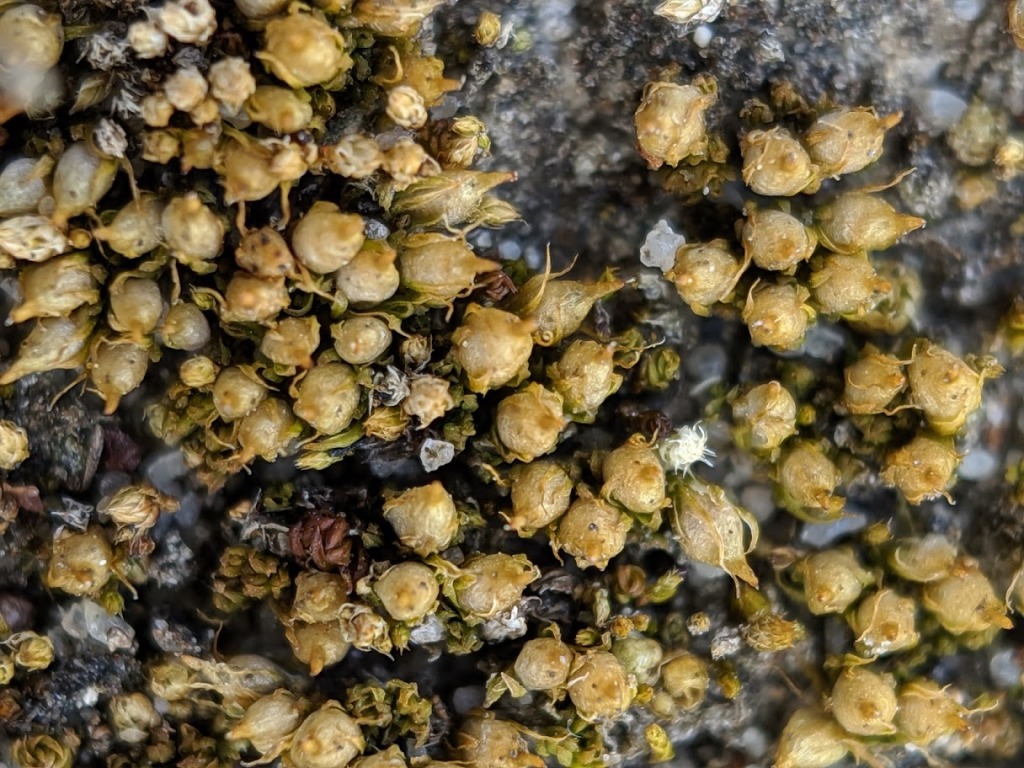Encalypta
Goniautoicous or paroicous. Asexual reproduction by filamentous rhizoidal gemmae in tufts on stems (not in Victoria). Scattered plants or tufts on soil or rocks. Stems simple or irregularly branched, tomentose at base or throughout; central strand absent or weakly differentiated. Leaves erect spreading to reflexed when moist, inflexed to conduplicate when dry; apex rounded, obtuse, acute, or acuminate, sometimes with a hairpoint (not in Victoria); costae subpercurrent to long-excurrent; margins entire, plane to weakly recurved on one or both sides, sometimes with a weak border of more elongate cells near base; laminal cells quadrate to rectangular, pluripapillose on one or both surfaces toward apex. Capsules exserted, emergent, or immersed, operculate or cleistocarpous. Calyptra completely enclosing capsule or not rupturing from the vaginula, instead remaining intact as an epigonium and enclosing seta and capsule, smooth or papillose. Operculum when present rostrate from conic base. Peristome absent, single (not in Victoria) or double (not in Victoria).
Cosmopolitan, but most diverse in cold and temperate regions of the northern hemisphere and composed of approximately 40 species (Ignatova et al. 2016; Ignatov & Fedosov 2018; Kou et al. 2020); two species in Victoria.
 Spinning
SpinningSynonyms
Horton, D.G. (2012). Australian Mosses Online. 20. Encalyptaceae. http://www.anbg.gov.au/abrs/Mosses_online/Encalyptaceae.pdf.
Ignatov, M.S.; Fedosov, V.E. (2018). A new name in Encalypta (Bryophyta). Arctoa 27: 226.
Ignatov, M.S.; Fedosov, V.E.; Fedorova, A.V.; Ignatova, E.A. (2016). On the systematic position of Discelium (Bryophyta). Arctoa 25: 278–284.
Kou, J.; Feng, C.; Niu, B.; Xiao, H. -X. (2020). Encalypta papillosa C.Feng, J.Kou & B.Niu (Encalyptaceae, Musci), a new species from Tibet, China. Journal of Bryology 42(4): 326–332.



